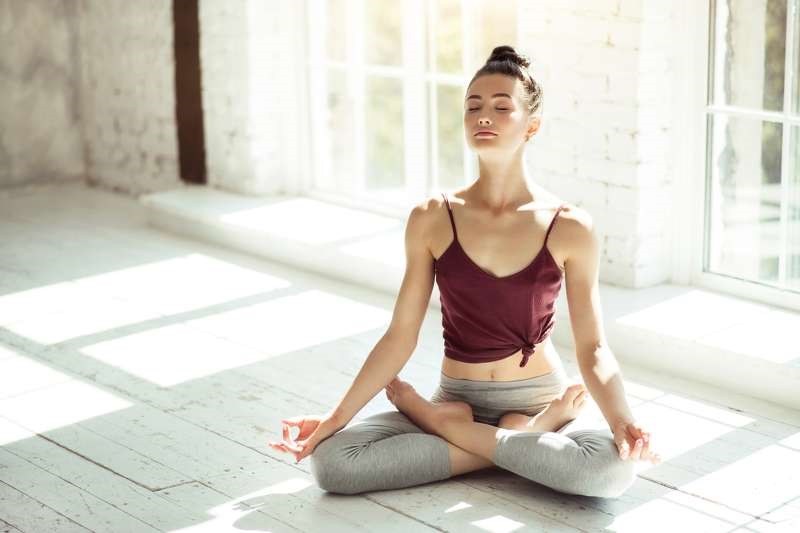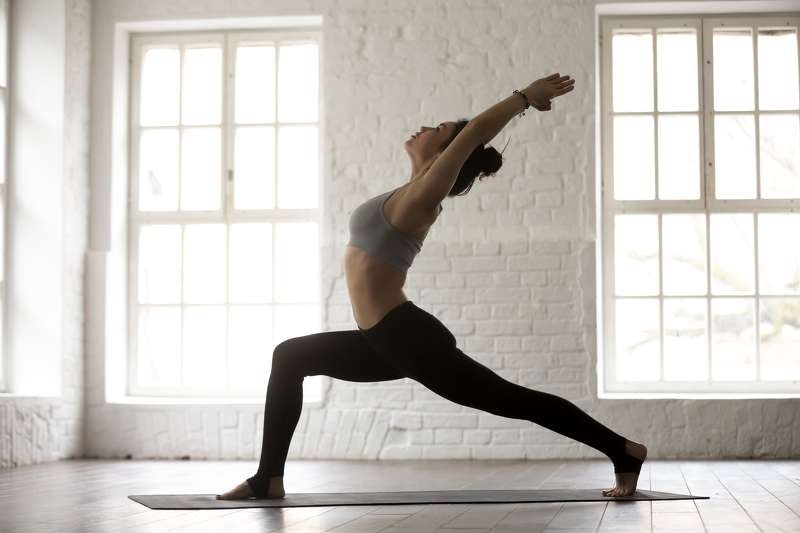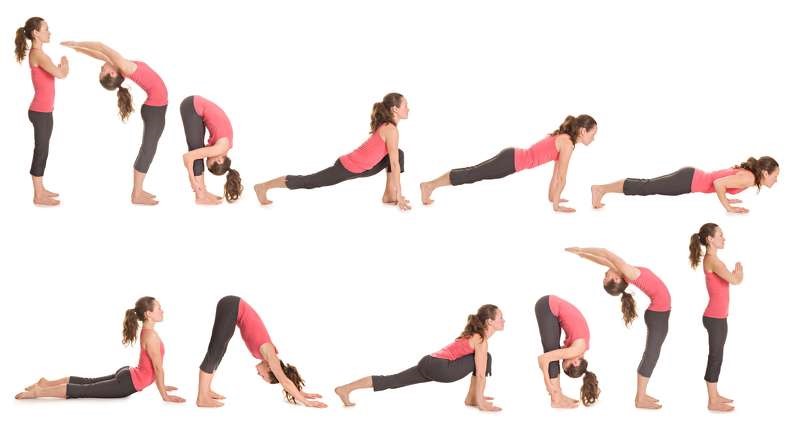From Ashtanga to Kundalini – we’ll tell you which style suits you, how you recognize a good studio and what equipment you need. Plus: The most important exercises to get started.

Looking down dog, cat, cow, cobra, crow – these are not just any animals, but also the most famous yoga exercises.
The problem: many do not even know where to start. At Ashtanga or rather Kundalini? And what is Hatha? But that’s over now because here you get all the important information about yoga.
Why should you learn yoga?
Yoga has been an absolute trend sport for years. From India to America, Canada, and Europe, millions of people are excited about this particular workout. What has been practiced for centuries cannot be bad, right?
The core of holistic yoga practice is not primarily physical fitness or physical fitness. The goal of yoga is rather the connection of the body with the inner self and the entire cosmos.
This is how the individual potential of the yogi should be developed. The postures, the so-called asanas are aids to achieve this goal. Besides the asanas, meditating and chanting mantras also serves to achieve union.
For whom is yoga suitable?
The good news: Yoga is for everyone. From pregnancy to baby, hormone to laughter yoga, there is a full range of options.
Depending on which fitness level you are or which goal you want to achieve with yoga, some types of yoga are of course better than others.
In principle, however, there is always the possibility for people with knee, hip or other physical ailments to do yoga – for example, special back yoga.
How can I learn yoga?
There are several ways to learn yoga. On the one hand, you can go to the fitness or yoga studio in a classic way to attend a course there.
The second variant would be one-to-one training with a yoga teacher. This option is also offered by most studios.
Those who prefer to practice at home can learn the basics with various apps, such as Asana Rebel or MyBlossom, as well as YouTube channels such as Mady Morrison’s and books, for example, “Das große Yogabuch”.
How often should you do yoga?
The beauty of yoga is that you can do it basically every day. It does not have to be super strenuous power yoga.
A small meditation and a few sun salutations are a perfect start to the day – or a cozy end to the evening. The important thing is to find good mediocrity.
Depending on what the rest of the workout plan looks like, you can, for example, practice strenuous yoga styles three times a week – Ashtanga or Vinyasa Flow – and meditate twice a week or practice more relaxed styles like Yin or Kundalini.
In this case, one should first of all listen to the needs of one’s own body and gradually get on with one another.
Which styles of yoga are for beginners?
Yoga styles are almost like sand on the sea. We explain which types are suitable for newcomers to yoga.
Hatha Yoga
Hatha Yoga is probably the best-known type of yoga. When talking about yoga in general, this style is usually meant, because this type of yoga leads through asanas, pranayama (breathing techniques) and meditation in a balance of body and mind. Here are classic asanas such as down-looking dog or warrior I-III practiced.
Kundalini Yoga
Kundalini yoga follows the teachings of Yogi Bhajan and is the yoga of transformation. Because even in the first hour you feel yourself and your body in a whole new way. A Kundalini class begins classically with a back-warm-up, the chanting of mantras, followed by asanas and a long deep relaxation at the end. Shooting is meditated and given a common mantra. In this style of yoga, the exercises are not corrected by the teacher.
Fascia yoga
In fascia yoga, the exercises are typically held for a very long time, and more and more resistance is released through breathing and focusing on the third eye. So you sink deep into the strain and relax deep-seated tension. The more fascia is stretched, the more force the body can generate later. In addition, a supple connective tissue is better protected against injury.
Ashtanga Yoga
Ashtanga yoga is also called the “eight-limbed path of yoga”. Through the tristhasana of movement, breathing, and line of sight, the yogi learns the eight teachings of self-control, a healthy lifestyle, physical exercises, breathing, withdrawal of the senses, concentration, meditation, and silence.
Which exercises are suitable for entry?
You want to practice first asana before the first lesson? These poses are ideal for getting started:
Sufi circles
Here you sit cross-legged and moves the upper body circular from left to right. After a few minutes, the direction can be changed.
camel ride
For this exercise, you can sit in a cross-legged or heeled seat, then tilt your hips forward while exhaling and pull the abdomen inward toward the spine as you inhale. Start slowly and then increase the pace.
Cat-Cow

The starting position is the quadruped stand. First, you pull the navel in the direction of the spine and tilt the pelvis far back. The spine moves in the direction of the ceiling, just like the back of a cat. The chin points to the chest meanwhile.
As you breathe in, lower your stomach towards the yoga mat and pull the shoulder blades far back. At the same time, the head is lifted, so that the view goes to the top.
The back looks a bit like the bent back of a cow in this position. The two positions can now be alternately combined with breathing.
These first three exercises are ideal for warming the back, loosening the muscles and mobilizing the spine.
Warrior I

For this exercise, you stand in a big lunge on the yoga mat while your hips are pointing forward. The back leg should be stretched out, the front knee should not protrude over the toes. The arms are stretched upwards.
Who can, goes into a slight back bend. The power of the exercise comes from the firm footing. The Warrior I stretches the shoulders, neck, abdomen, groin, and back muscles, making the hips more flexible.
Sun Salutation

Sun salutation is a sequence of asanas combined into a flow. It starts when standing, the arms are brought together above the head. From a slight back bend, the yogi goes straight down into the forward bend, then up into half the bend.
The right foot is placed far back and breathed briefly into the stretch. Then the second leg is put backward, in the dog looking down. From there it goes via the support position in the cobra or the dog looking up and back into the dog looking down.
The right leg is brought forward again, then the left. The yogi breathes in the forward bend and then goes straight back up and brings his arms over his head again in prayer before the heart. Same sequence with the other leg.
Sawasana
The so-called “corpse position” serves to relax after a yoga flow and is always performed as the last asana.
You lay flat on your back, your feet fall outward, your arms are lying loosely beside your body with your palms up. Close your eyes and cover you with a blanket.
Sawasana calms the nervous system and the heartbeat relaxes the muscles and makes your mind clear and alert.
Which equipment do I need?
Special clothing is not needed for yoga. Most yogis like to wear leggings and a fitted bodice. Others prefer rather wide-cut harem pants or loose tunics.
The only requirement should be that the clothing provides enough room for movement and long lunges, and also holds for overhead poses.
In addition, the clothes should not disturb them. Pinching bras or incisive pants distract only unnecessarily. Absolutely comfortable clothing should be worn in any case.
These are the four basics for your yoga workout
If you want to practice yoga at home or regularly in the studio, you should definitely buy a yoga mat. This should ideally be at least 4mm thick to make it comfortable.
Current top models can be found in our Yoga Mat Test.
It is also worth buying a meditation cushion, which makes it easier for beginners.
A yoga block and a yoga belt are also useful, as it makes it easier to do difficult exercises. Who wants to make it at home as comfortable as in the yoga studio, can also invest in incense sticks, meditative music, and candles.
What do I have to consider before the first hour?
Those who have never practiced yoga often have the inhibitions of taking the first step. Therefore, here are four tips that make it easier to get started as a yogi.
Yoga is all about time with yourself and the body!
Therefore, it is important to be mindful at this moment and to arrive in the yoga class and at yourself. Besides, it is a matter of courtesy to appear 10-15 minutes before the start of the lesson.
Sit quietly on your mat, lay down or stretch yourself a bit. So the hour can start on time and without hassle. It should always be remembered that every single participant has taken the extra time to appear on the course. You should respect that and not disturb the others by being late.
Yoga is not a competition!
Every yogi is there for himself and remains mentally on his mat. Therefore, it is recommended in the exercises, if that is possible to keep your eyes closed or to fix a point.
In no case should one observe or compare the others, because then the attention wanders away from oneself to others.
And: every person is different! Respect your body and only mute it as much as you can on this day. Sometimes it works better, sometimes worse. That’s no reason to feel untalented.
Be patient!
When you start yoga, you should definitely be patient. Most exercises will not work for the first time. The procedures, exercises, and mantras will be unknown to you – it is not always easy to not concentrate too much.
This will definitely change after two to three weeks. You will soon realize that your body is becoming more mobile, warmer and softer, with every asana you make.
Even if meditating does not work out so well at the beginning, that should not frustrate you – that is still some of the same for many years. And: no master has fallen from the sky yet.
Take your time!
The 30 minutes before and after the yoga class you should keep your best free. So you can prepare ideally for the lesson, let the everyday thoughts draw a little bit and get you in the right mood for the exercises.
After the lesson, you should let the exercises work off and make you aware of what you have done to your body. This is best done with a cappuccino in your favorite cafe or a short walk in the fresh air.